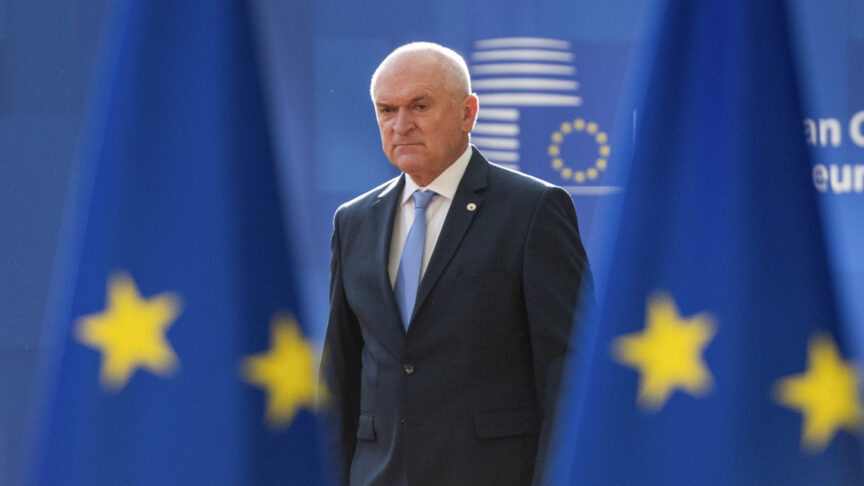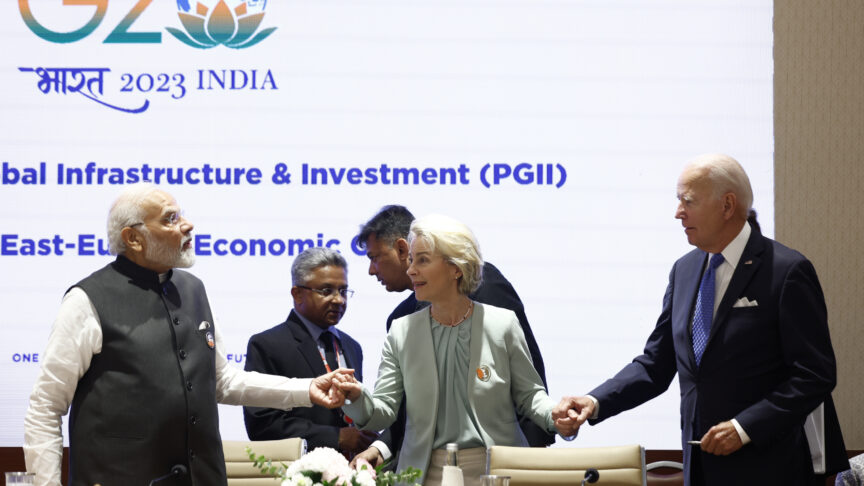In defence of Europe
European defence ministers are meeting at a difficult time, with Robert Gates accusing Europeans of threatening Euro-Atlantic security, and the recent collapse of the Dutch government over Afghanistan. The defence ministers urgently need to re-examine how the continent thinks about its security
European defence
ministers, meeting on the
Spanish holiday island
of Mallorca, may have
wished they had postponed their get-together. One of their number, Dutchman
Eimert van Middelkoop, will not be joining the group for much longer; his
government collapsed over the Netherlands’
support for NATO’s Afghan mission. Another, Denmark’s Søren Gade, had to resign
his post earlier in the week. Meanwhile, US Defense Secretary Robert M. Gates has
fired a rhetorical missile across their collective bows. In a recent speech, he
said public and political opposition to the military in Europe
had now grown so great that it was affecting Euro-Atlantic security.
The full extent by
of the problem faced by the EU defence ministers was set out in a report
by Nick Witney, who was Chief Executive of the European Defence Agency until
2007. While there are almost 2 million military personnel in Europe,
less than one-fifth of these are defined as ‘deployable’, and only one in 20
was actually deployed in military operations or peace-keeping activities in
2006. Most EU governments have slashed their defence budgets; only five EU
states – Britain, France, Poland,
Greece and Bulgaria –
spend more than 2 per cent of their GDP on defence and much of that on static,
Cold War forces. The
US
spends 4.7% of its GDP on its armed forces and warfighting.
The downward trend
in spending is likely to continue in the near-future. Experts have predicted
that in Britain
the number of trained military personnel could fall from 175,000 to little more
than 140,000 by 2016. France’s
defence spending has increased despite the recession, but serious problems
undermine the military’s readiness. A report leaked before President Sarkozy
embarked on a reform programme two years ago admitted that most
tanks, helicopters and jet fighters were unusable. Fewer than half of France’s
Leclerc tanks – 142 out of 346 – were operational. And fewer than half of its
Puma helicopters, 37 per cent of its Lynx choppers and 33 per cent of its Super
Frelon models were fit to fly.
But the EU has also
struggled to raise non-military capabilities, as shown in another ECFR report
from 2009 on the EU’s civilian capacities. Member-states follow incompatible
training regimes, have signed up to staffing targets they cannot meet, and are
risk-averse. On the ground, missions
follow strategies that are often ill-adapted to local environments. Deserving
greater concern, the European Union has tried to apply the “Bosnia
template” in places where it is unlikely to have much impact. In Congo, the EU has trained police officers in the
capital Kinshasa.
But the threat to stability has been the fighting in the east of the country –
1000 miles away – and the EU has largely left this situation to the UN to
resolve.
If fixing the lack
of military and civilian capabilities is not demanding enough a greater problem
is that European states do not agree on the nature of the key threats that they
face. The foundational deal that made ESDP/CSDP possible is falling apart.
Today there is no agreement about the nature of the security threats Europe faces. In fact, many do not believe Europeans have
anything to fear at all. Though German Foreign Minister Guido Westerwelle was
referring to a domestic debate, his remarks earlier this week about Germany living a life of “late Roman decadence”
could equally have applied to Europe as a
whole.
Absent a strategic
consensus about threats – and agreement that the continent faces any – it is
hard to argue for greater military expenditure, particularly in a recession. To address these problems, European defence
ministers should propose a three-part programme.
First, it is
necessary to re-constitute a strategic consensus in Europe
about the threats faced by the continent. One way would be for the
establishment of a European Intelligence Council, not to undertake intelligence
gathering, but like the US Intelligence Council, draw together a range of
analysts, academics, officials and officers who could use a range of
information, from secret to open source, to draft an annual, publicly-available
Threats Assessment and a forward-looking Future Assessment for discussion
annually by the European leaders.
Second, it will be
key to re-conceptualise the current EU missions to make sure that they make use
of all the EU’s instruments, are conceptually sound, and reflect the bloc’s
priorities. This means breaking the “Bosnia template”. To help the EU
move beyond the operational habits it learned in the Balkans, EU member-states
should inaugurate a Working Group on Doctrine. This group should be tasked with
producing an overarching EU doctrine for civilian-military operations in a
year, on the basis of consultations within member-states and discussions with
NATO, the UN and other significant operational actors.
Finally, a reform
plan will need to re-energise the development of civilian and military
capabilities in member-states, as well as the ability to integrate these
capabilities. The European Defence Agency should be strengthened and defence chiefs
must get behind the endeavour, accepting that the EDA is the place for work on
capability development. Then it will be necessary to look at pooling resources.
A creative approach to Permanent Structured Cooperation, which would see an
exclusive pioneer group replaced with the concept of a number of different
cooperative groups with overlapping membership, could be an option. Efforts to
liberalise the defence market must also not lead to a fall in research and
development in the defence sector. Finally, on the civilian side new
initiatives are required to overcome problems of training, recruitment as well
as planning and lesson-learning.
The details of such
a new agenda could be left to a high-level panel,
perhaps led by a former EUSR, who can undertake a study of what needs to be
fixed, much as Lakhdar Brahimi did for the UN. The report could be discussed by an ad hoc group of ministers who could set to work
on a Security Action Plan to be discussed at an extraordinary “Security
Summit” of European leaders in mid 2010. Such a mid-year event would allow
EU leaders to take advantage of NATO’s work on its Strategic Concept, expected
to be finalised at the NATO summit in November 2010.
More than ten years
since France and the Britain gave birth to the European Security and
Defence Policy with the now famous St Malo Declaration, the time has come for a
serious re-examination of Europe’s defence
record and the development of a new agenda. This needs to take advantage of the
Lisbon
Treaty’s instruments but also seek to answer a broader set of questions about Europe’s ability to address threats. In 1959 General de Gaulle said of
NATO that, as it was conceived in 1949, “L’OTAN, c’est la défense de
l’Europe par les Américains.”
But today, Europeans need to be able to defend
themselves.
The European Council on Foreign Relations does not take collective positions. ECFR publications only represent the views of their individual authors.


